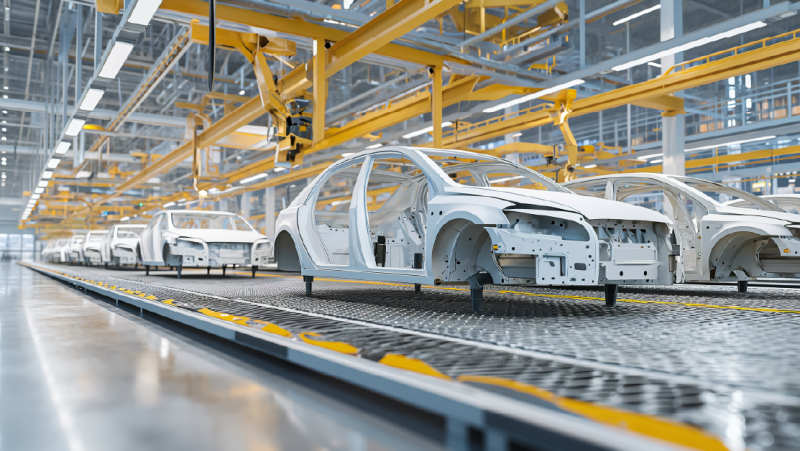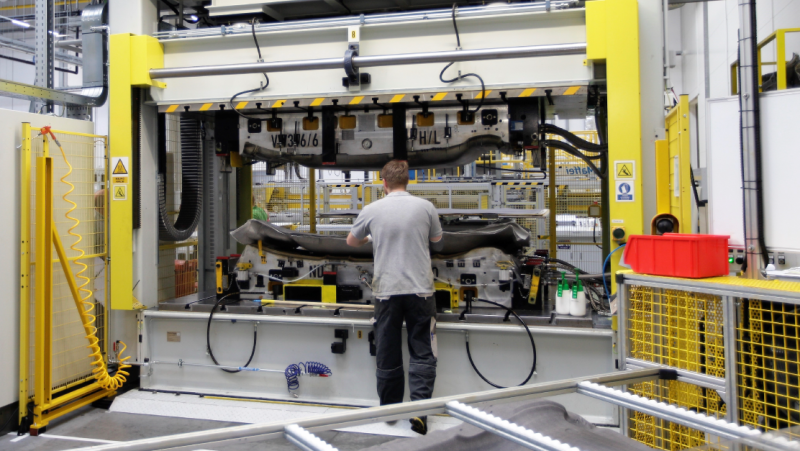When transformation is not a trend, but a necessity
- Digital Factory
- Article
An automobile comprises about 20,000 parts. Some components are so unique you could count their suppliers on just one hand. If on top of that you’re forced to speedily switch to a new supplier, the whole process can become a nightmare. We probably needn’t quiz you on why this information is so interesting of late…
The biggest changes faced by logistics and manufacturing in 2020
Likely the highest-buzz phrase in automotive as of spring 2020 was “supply chain.” Or more precisely, its dependence on Asian countries. The trends currently shaping the global world of logistics and manufacturing are tied to precisely this region. Anyone caught sleeping may soon face major problems. Experts and the public agree – the road lies in digitalising and automating. Quickly. But is this kind of transformation actually possible?
But it is in precisely this regard that the situation around us is quickly changing. Because companies are feeling how decisiveness can help them to survive. We’ve prepared a list of changes found in predictions for the future of logistics. How many of them do you already have behind you?
Do you know your suppliers’ supplier? Maybe you should!
The supply stoppage in Wuhan, capital of China’s Hubei province – the province that is the centre of the automobile, electronics and pharmaceutical industries – disrupted supply chains on every continent. It thus revealed fairly painfully that companies often do not even have an inkling of where their suppliers’ suppliers reside.
Most firms have always built up their global supply chains so as to maximise efficiency and profits. Especially in automotive, the Just in Time (JIT) supply mode has thus caught on. In calm periods, JIT can be the optimal way to manufacture an object as complex as automobiles are. Now, however, we can also see the downsides of this system, which demands that all its components run like clockwork.
Does this mean we will witness the end of JIT? Likely not. But our view of it may change considerably. The majority of firms are currently working on “What If” scenarios that include alternative solutions during crisis situations. These scenarios take on various forms. Besides automation, they also extend into areas like 3D printing or an option to reorient both manufacturing and logistics towards an entirely different product almost instantly.
Resilience and transparency – the supply chain’s new mottos
The effort to reduce dependency on a single specific supplier or geographical region will likely lead to more supply chain diversification than we are used to today.
The importance of the whole chain’s transparency may thus grow as well. It may not be enough for automakers and other manufacturers to monitor only their Tier 1 and Tier 2 suppliers; a comprehensive view of the whole supply chain will be a major advantage. For a robust and resistant supply chain, the identification of weak links is important, especially at Tier 3 and below. And even a single fifth-tier supplier can shut down many assembly plants of one or more OEM manufacturers if a supply stoppage or financial or operating problems occur.
The future commands us to re-evaluate and perhaps even fully revise benchmarks for the entire logistics sector. Instead of costs or speed, resilience, flexibility and the ability to respond immediately are coming to the fore.
Precisely these characteristics enable firms to minimise their losses in times of crisis. How? Thanks to supply chain mapping and flexible measurement systems, they can access data on every movement almost immediately after the disruption of any process. They know precisely which products, parts or suppliers are problematic and why. This enables easy prioritisation and optimisation, on the order of minutes. Shortly and simply – mapping of the supply chain and processes sounds like a large and financially demanding bite to chew. But it can save not only money, but also time that would otherwise fall to rescuing a collapsing system.
Can we expect acquisition reshuffles?
However, supply chains can’t change overnight. For one thing, a change like this is challenging; for another, companies will need to work with a concept when tackling it. ZF CEO Wolf-Henning Scheider has stated that a regional supplier structure brings only limited benefits. Furthermore, automotive is among the most complex industries, with a tightly interconnected structure. Decisions on supply chains’ future will thus largely depend on the entire industry’s behaviour. It is nearly impossible to localise suppliers into a single region with the aim of ensuring operational security. This is one reason why – compared to other industries such as pharmacy – automotive must lean lightly on state stimuli. The effort to increase supply-chain resilience may also result in the buying up of smaller suppliers. These often find themselves in a difficult situation, forcing them to minimise their manufacturing costs so as to stay afloat longer than their competitors.
Companies that have sufficient spare funds even in our present times – be they purely financial investors, technology firms or automakers who wish to preserve their supply chains – may leverage this situation for acquisitions. These new owners may also help to preserve jobs and smaller companies. However, in certain discussions, fears have surfaced regarding the buying up of national firms by foreign owners – and countries’ policies may have a role to play here as well.
Digitalisation and automation as tools to soften the impact of the crisis
“There are quite a few firms investing into automation and digitalisation even in these times. They realise this will help them to traverse future similar crises faster, and they can also replace people wherever they are unneeded. The solution lies in reducing meetings and shifting employees from manual labour into more creative work with higher added value, which they may even be able to perform from home. These employees are often, ideal key users for the systems they previously operated. A major shift in thinking is happening here; in many companies, the real confirmation of this trend is yet to come.”
Roman Žák, Aimtec’s Chairman of the Board
Data overload? Supplier overload? An automated supply chain can be the solution.
We can expect that internal digitalisation and automation will be mirrored externally. Companies will likely demand greater integration of their supply chain, precisely in connection with its transparency, or more precisely, visibility. For production to flexibly react to supplier-side stoppages, you need to have integrated even the lower tiers of the supply chain and have a real-time overview of deliveries. Data from suppliers once again needs to be in all internal enterprise systems, so that all departments involved – from production planning to delivery – can react to it. But how can you achieve this?
Aimtec’s Cloud & Integration Solutions Director Jan Stočes believes that EDI will also play an important role: “EDI has long meant more than just receiving call-offs and sending ASNs. It’s a tool for supply chain integration, digitalisation and automation. EDI has grown from mere exchange of documents in electronic form into a solution that increases efficiency and productivity thanks to more precise information for the warehouse, the purchasing room and the production hall. As the supply chain becomes ever more tightly integrated, and the pressure grows for it to become ever more transparent and visible, EDI is turning into a key element for maintaining smooth flows during the production of a growing quantity of goods. As the data exchanged constantly grows, further parts of the supply chain are digitalised and traceability becomes more detailed, it is more than likely that electronic data interchange will play a principal role. Especially during the COVID-19 pandemic, EDI was one of the few solutions to be used practically uninterrupted, precisely so that firms could respond flexibly to market events.”
Share article
Top stories from logistics, production and IT.
Subscribe to Aimtec Insights
By registering, you agree to the processing of your personal data by Aimtec as described in the Privacy policy.
Get top stories and articles
from Logistics, Production and IT.
Subscribe to Aimtec Insights
By registering, you agree to the processing of your personal data by Aimtec as described in the Privacy policy.







